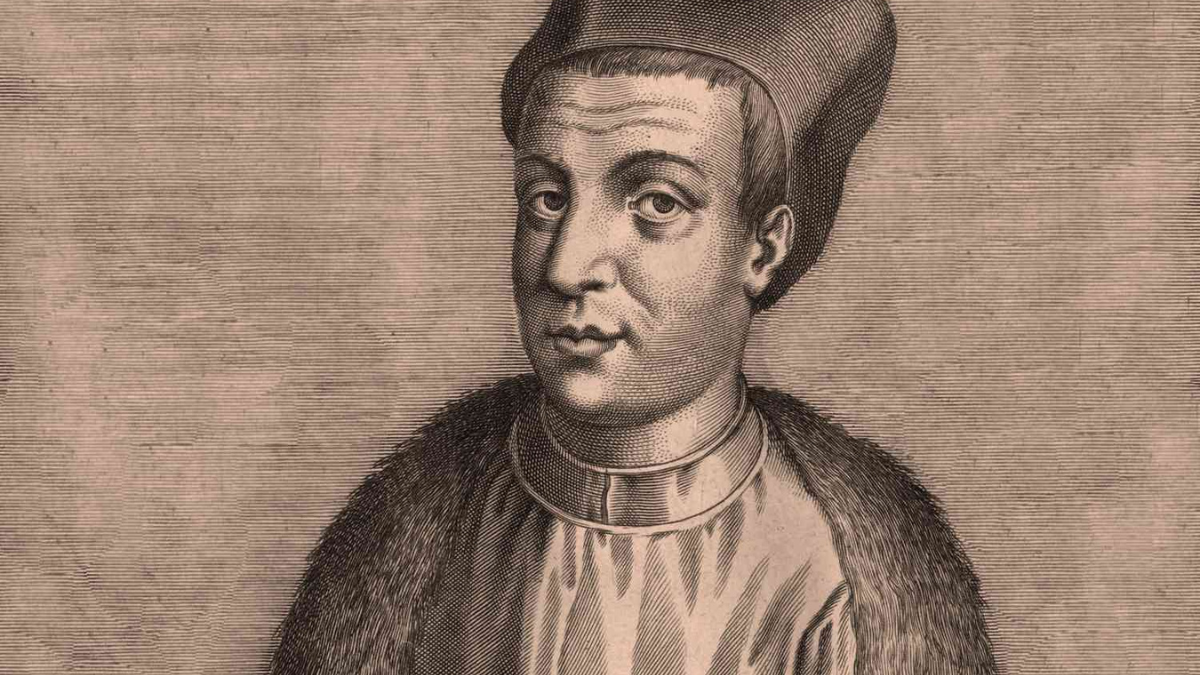

A Hymn by Thomas à Kempis to Imitate Christ
The hymn “O Love, How Deep, How Broad, How High” tells the story of salvation.
03/27/23
John Stonestreet and Glenn Sunshine

The hymn “O Love, How Deep, How Broad, How High” tells the story of salvation, from Jesus’ Incarnation through His Ascension to the sending of the Holy Spirit to His Church. The lyrics are a translation of a portion of a 23-stanza hymn from the 15th century, likely written by Thomas à Kempis.
Thomas à Kempis was a member of a lay religious order known as the Brethren of the Common Life. The Brethren order was founded by Gerhard Groote who came from a prominent family in Deventer in the Netherlands. Though highly educated with a potential teaching career at the University of Cologne, Groote was forced to reassess his life and faith after a near deadly illness. He converted his house in Deventer to provide hospice care for poor women, organizing them into a lay religious community known as the Sisters of the Common Life. The Brethren of the Common life were founded later as a male counterpart to the Sisters.
The Sisters and Brethren of the Common Life based their life together around the Rule of St. Augustine, though at first, they remained lay people who took no permanent vows and were free to leave the group at any time. Their spiritual life centered on something known as the Devotio Moderna, which emphasized four main themes: a focus on the Bible, a moral life that replaced vices with virtues, the “imitation of Christ” using structured meditation of Bible stories to identify emotionally with Christ and His Passion, and a return to the model of the early Church to counter the corruption in the Church at that time.
Recognizing that no one could practice the Devotio Moderna alone, the Brethren and Sisters lived in single-sex communities, often in a single large house, organized around times of private and corporate prayer and meditation, confession, mutual correction, support, and attending Mass together. The communities did not rely on charity but were supported by the labor of the members. Given the emphasis on the Bible and early Christian writers, many members earned their living by copying manuscripts. Some of the members started schools so that others could study the sources of Christian life as well.
It was in one of these schools that Thomas à Kempis received his education. Upon graduation, he joined the order, was ordained a priest in 1413, and became the sub-prior of his monastery in 1429. There, he spent most of his time copying manuscripts and writing devotional works and hymns.
À Kempis is the probable author of The Imitation of Christ, written circa 1418-1427. The book was circulated widely in manuscript before its first printed edition in 1471; by 1500 it had been printed in over 100 editions, including multiple languages. It has since been translated into more languages than any other book besides the Bible. The book’s instructions on spiritual formation, drawn from the Devotio Moderna, have been enormously influential for both Catholic and Protestant spirituality. It is easily the most important devotional book in church history next to the Bible itself.
“O Love, How Deep, How Broad, How High” has been attributed to Thomas à Kempis because its tone and themes strongly echo The Imitation of Christ and the manuscript that recorded the poem was written in his handwriting. It is without doubt a product of the Devotio Moderna. Its Lenten verses refer to Jesus’ fasting and temptation in the desert, which was the model for Lent in the early church, and reflections on the Crucifixion.
Consider the first four verses:
1 O love, how deep, how broad, how high,
beyond all thought and fantasy,
that God, the Son of God, should take
our mortal form for mortals’ sake!
2 He sent no angel to our race,
of higher or of lower place,
but wore the robe of human frame,
and to this world himself he came.
3 For us baptized, for us he bore
his holy fast and hungered sore;
for us temptation sharp he knew,
for us the tempter overthrew.
4 For us he prayed, for us he taught;
for us his daily works he wrought,
by words and signs and actions thus
still seeking not himself but us.
This Breakpoint was co-authored by Dr. Glenn Sunshine. For more resources to live like a Christian in this cultural moment, go to colsoncenter.org.
Have a Follow-up Question?
Related Content

© Copyright 2020, All Rights Reserved.














